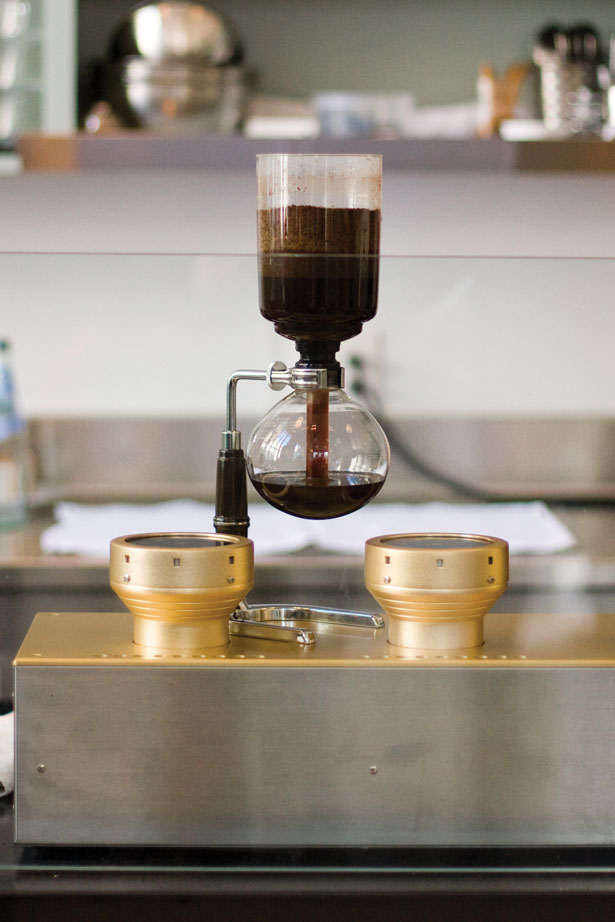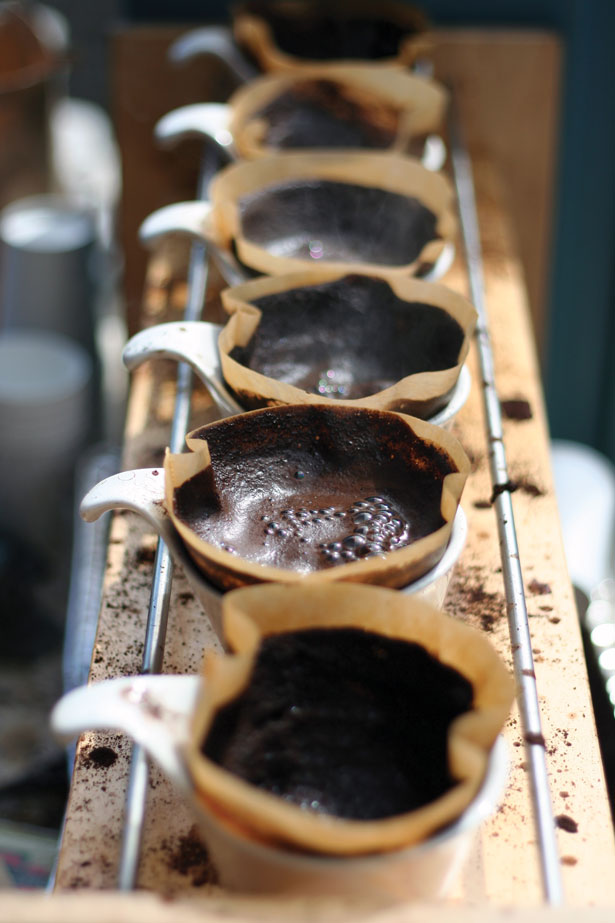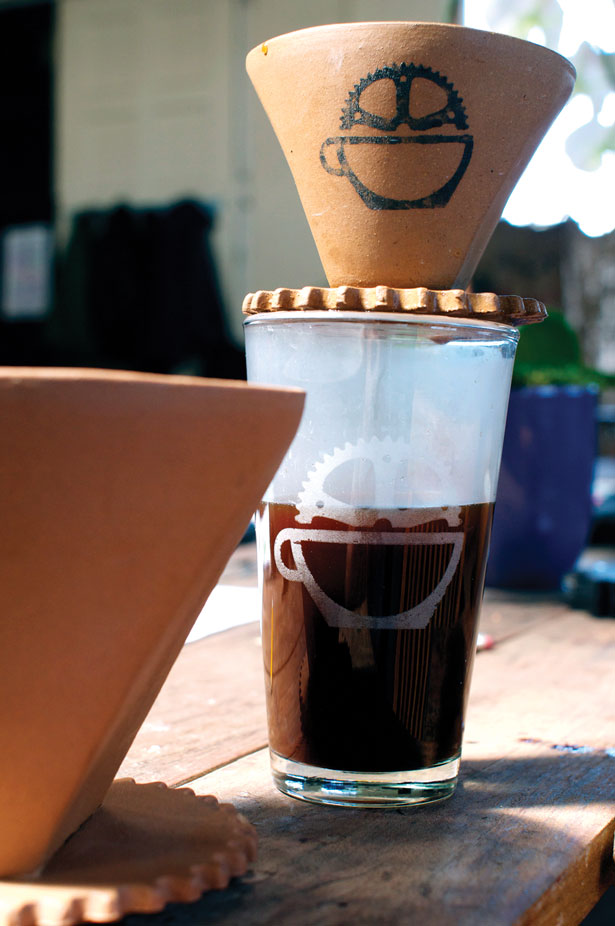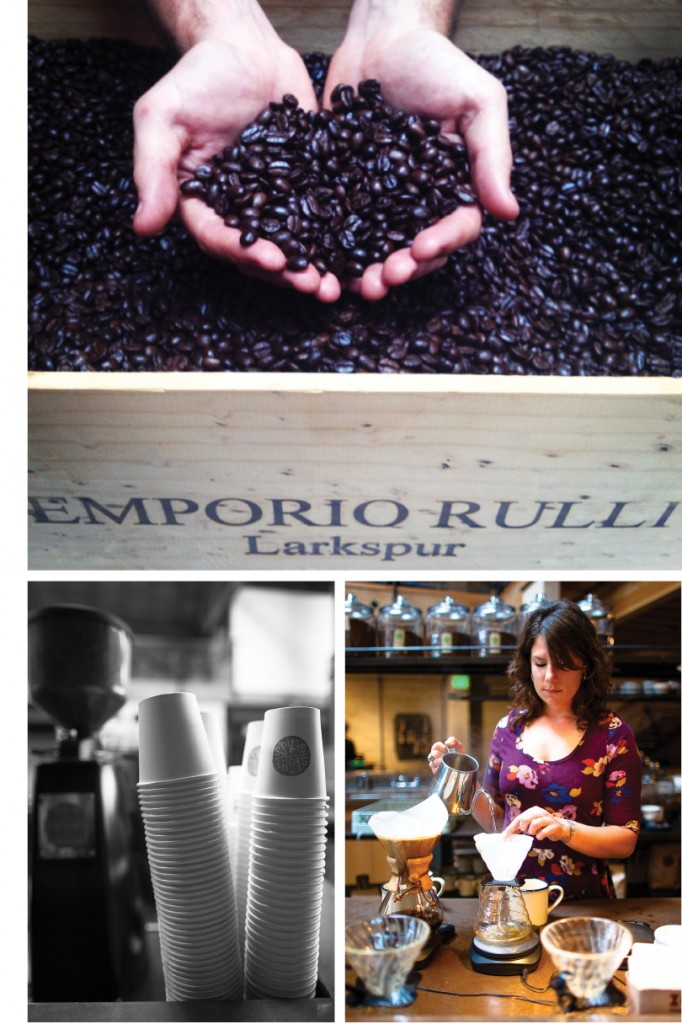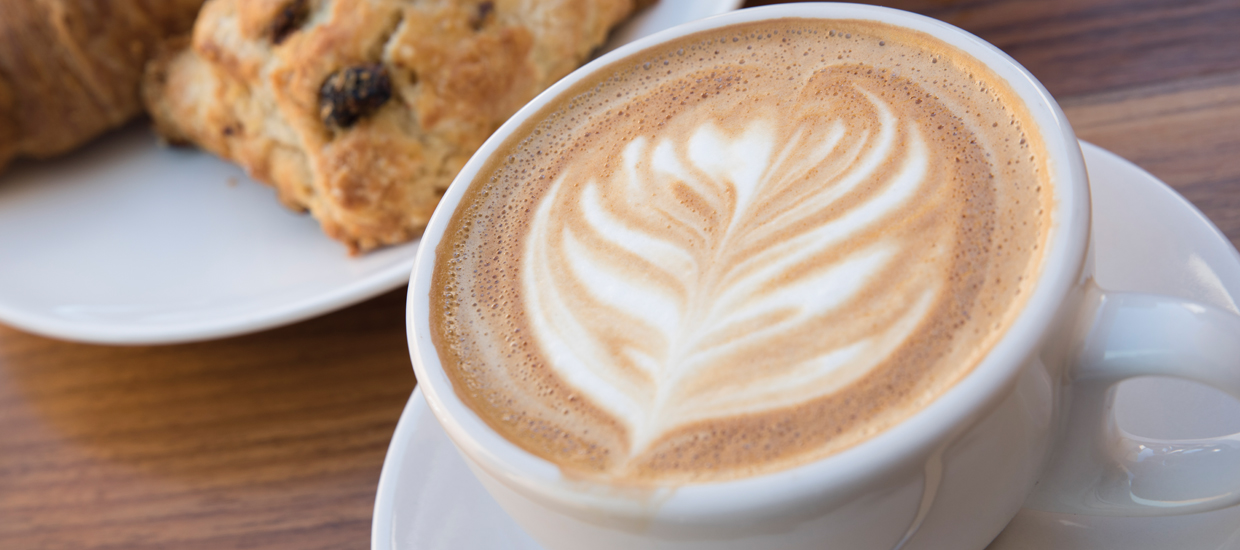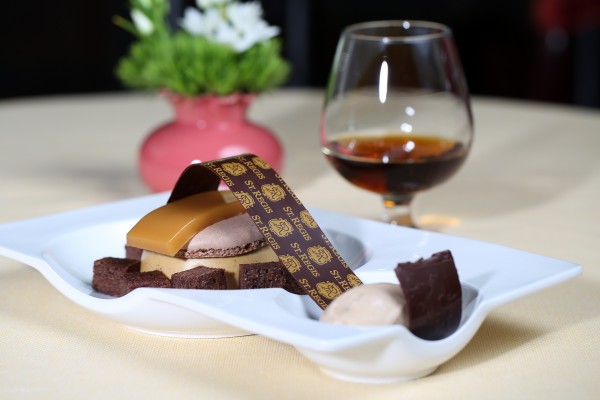San Francisco’s Blend
New coffee trends percolate in shops across the city.
By Somer Flaherty
There was a time when coffee was just coffee. You drank it black, or perhaps with two packets of sugar and a splash of whatever dairy product your refrigerator had available. The demands of today’s fast-paced lifestyles have ushered in ubiquitous drive-through coffee shops and fast food menus featuring iced lattes and frozen concoctions, which are accessible, cheap and quick. But in San Francisco, a coffee renaissance is brewing—where labor-intensive single cup servings, specialty blends, micro-roasting and luxury pairings are “de rigueur.”
It isn’t surprising that residents and visitors will line up for $5 cups of hand-brewed, single-serve creations. San Francisco’s history is rich in coffee, dating back to 1899 with the opening of the family run, fresh-roasted coffee company Freed, Teller & Freed, which survived the infamous San Francisco earthquake of 1906 and still operates a mail-order business. However, it wasn’t until 1966 when Alfred Peet opened his shop, Peet’s Coffee & Tea in San Francisco’s neighboring Berkeley, that the Bay Area became known for its quality coffee. Peet influenced today’s coffee celebrities, like Blue Bottle Coffee’s James Freeman, who credits Peet for opening the door for the specialty coffee industry.
With this heritage, it’s no wonder that the most popular shops don’t operate like the usual automated experience. It’s a town where the beans are obsessively sourced and where a barista can explain the nuances of flavors and aromas, like hay and dried banana, developed through the roasting process. At the hippest San Francisco coffee shops with the longest lines, coffee isn’t just received from a warming-tray pot; it’s brewed in a $20,000 halogen-powered siphon machine or painstakingly hand-poured into individual drip filters.
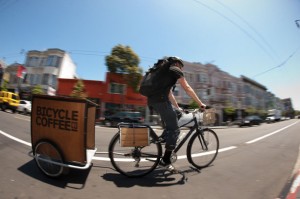 In San Francisco, high-end, small-batch roasters are even showing up at places like local nursery Flora Grubb Gardens, where an outpost of the popular Ritual Coffee Roasters is busy each weekend with people who aren’t even looking for plants. The city’s most popular restaurants are just as in tune with the coffee experience, elevating it to the same level of importance as a chef’s culinary creations. At Michael Mina San Francisco, a custom blend of cult favorite Lamill coffee, “The Michael Mina blend,” is served from specialty carafes that individually brew the drink. At Twenty Five Lusk restaurant, one of the most popular brunch items is the coffee and doughnuts—a pairing of house-made brioche doughnuts, chocolate sauce and French press coffee.
In San Francisco, high-end, small-batch roasters are even showing up at places like local nursery Flora Grubb Gardens, where an outpost of the popular Ritual Coffee Roasters is busy each weekend with people who aren’t even looking for plants. The city’s most popular restaurants are just as in tune with the coffee experience, elevating it to the same level of importance as a chef’s culinary creations. At Michael Mina San Francisco, a custom blend of cult favorite Lamill coffee, “The Michael Mina blend,” is served from specialty carafes that individually brew the drink. At Twenty Five Lusk restaurant, one of the most popular brunch items is the coffee and doughnuts—a pairing of house-made brioche doughnuts, chocolate sauce and French press coffee.
For those not well-versed in the finer points of caffeine culture, the obsessiveness in the city might be off-putting—take Blue Bottle Coffee, which doesn’t serve espresso to-go because of its belief that the drink should be enjoyed right away. Still, as the coffee culture continues to grow in San Francisco, craft coffee trends and the demand for them continue to percolate.
The slow dance of the pour-over, also known as the hand-pour, is on the rise.
With more San Francisco destinations—including Blue Bottle, Little Vine and Philz Coffee—embracing the practice, drinkers in need of a caffeine fix are relegated to waiting precious minutes in exchange for a cup that has become the coffee drinker’s version of couture. This widening acceptance of waiting for a drink that can take less than 60 seconds at a local Starbucks is a nod to the growing coffee culture in San Francisco and beyond.
Pour-over isn’t for everybody, but locals say it makes the morning an experience. The ordinary coffee routine is often seen as a necessary convenience, something set on a timer each morning. With pour-over, drinkers watch the barista pour water from a kettle by hand, one cup at a time, over fresh grounds. Each cup offers a unique experience, and although the method undoubtedly takes more time than conventional brewing, it’s said to unlock the subtlest notes in the coffee.
undoubtedly takes more time than conventional brewing, it’s said to unlock the subtlest notes in the coffee.
“Coffee purists say that’s the way to drink it,” says Melissa Gugni, co-owner of North Beach newcomer Little Vine, which serves pour-over coffee less than 10 minutes from The St. Regis San Francisco. “Pour-over is really the way to get so much of the flavor out of each cup. It doesn’t taste burned out from sitting in a coffee pot for too long.”
Emporio Rulli’s Gary Rulli has been roasting his own coffee beans for more than 20 years, creating coffee blends that pair well with his authentic Italian pastries. For Rulli, who has six restaurants and cafes in the Bay Area, the pour-over trend inspired him to develop a space specifically suited for it in his new location, Bancarella, conveniently located 10 minutes from The St. Regis San Francisco and next to his already popular Il Caffe in Union Square.
“Pour-over coffee is popular right now, and we knew we wanted to do it at Bancarella, but it had to be thought of from the initial design of the space to have enough room to do [it],” Rulli says. “The flavor profile, freshness, the experience of having it ground at the moment and made immediately is the same way that espresso is made, in this romantic style.”
Fresh Roast
Taking a locavore approach to coffee making and shunning big-box coffee outposts in San Francisco, micro-roasters are popping up everywhere, from the Mission to the South of Market districts and the Haight-Ashbury neighborhood. Similar to a small-batch approach at a microbrewery or artisan cheese company, with micro-roasting, tiny lots of coffee beans are roasted on-site and, like a farmers market approach, sold to local clients, cafes and businesses.
One of the area’s most popular micro-roasters is Bicycle Coffee Co., founded by friends after a trek through the rainforests of Central America, where they met and learned the practice from local farmers. The group returned from the trip and built their own small-batch roaster, first using a manual popcorn popper, then a barbecue grill, and finally roasting in their own 20-pound drum over an open flame.
Like Bicycle Coffee, local micro-roasters Sightglass Coffee and Four Barrel roast the beans in the same neighborhoods where their customers purchase the coffee, ensuring that they will be drinking some seriously fresh brews. A believer in small production methods, Sightglass creates handmade roasts and makes it a point to share the story behind the coffee—where it was grown, how it was processed and who handled it along the way.
Bicycle Coffee takes its connection to the neighborhoods a step further by using bicycles to deliver the freshly roasted coffee beans, rain or shine, to consumers. In San Francisco, the eco-move is also practical, as the bikers can maneuver through the city’s traffic and dense urban center. After the beans are roasted in their Oakland warehouse, they’re carried in buckets to San Francisco via the Bay Area Rapid Transit (BART) public transportation system. From there, a team of bike messengers hand-delivers the products to the clients, like Little Vine.
“There have been times when it’s pouring rain, and I say I bet they wish it wasn’t their model,” Little Vine co-owner Gugni says. Although the team at Bicycle Coffee concedes it would be easier to deliver by car, co-founder Brad Butler says they are committed to using only sustainable methods to deliver their coffee.
Stroke of Genius
The coffee genius bar trend takes coffee R&D to a whole new level. At these outposts in San Francisco, the counter looks more like a high school science class than a coffee house. Customers wait for their made-to-brew orders while reading about the diverse regions their coffee came from and discussing the flavor profiles of the bean. Customers don’t seem to mind the slow-moving queue, but rather welcome the individualized experience of what many call the slow bar movement.
One of the most popular genius bars is Blue Bottle. Founded by James Freeman in a potting shed adjacent to his Oakland apartment, the brand now has locations throughout San Francisco. The genius concept is working—the lines at the San Francisco Ferry Plaza Farmers Market stall are known to have as many as 20 people at any given time.
Freeman’s coffee empire has come a long way and now operates out of a 9,000-square-foot facility. The new space allows Freeman and his staff, all of who are dedicated to the art of coffee drinking, making and learning, to partake in activities like cupping. The practice of cupping involves tasting dozens of coffees from around the world, discussing the flavor profiles and ultimately deciding whether they are worthy enough to incorporate in the Blue Bottle repertoire.
In Blue Bottle outposts, the attention to each detail—including ceramic cups and Japanese siphon systems—is what Freeman says shows their appreciation for unnecessary beauty and a willingness to work for quality coffee. Customers are responding to this new kind of coffee house, with sales increasing an average of 50 percent annually each year.
It seems like people are willing to wait a few extra minutes to get their cup with a coffee experience rather than a coffee moment, and although trends come and go, such enjoyable experiences are here to stay.

